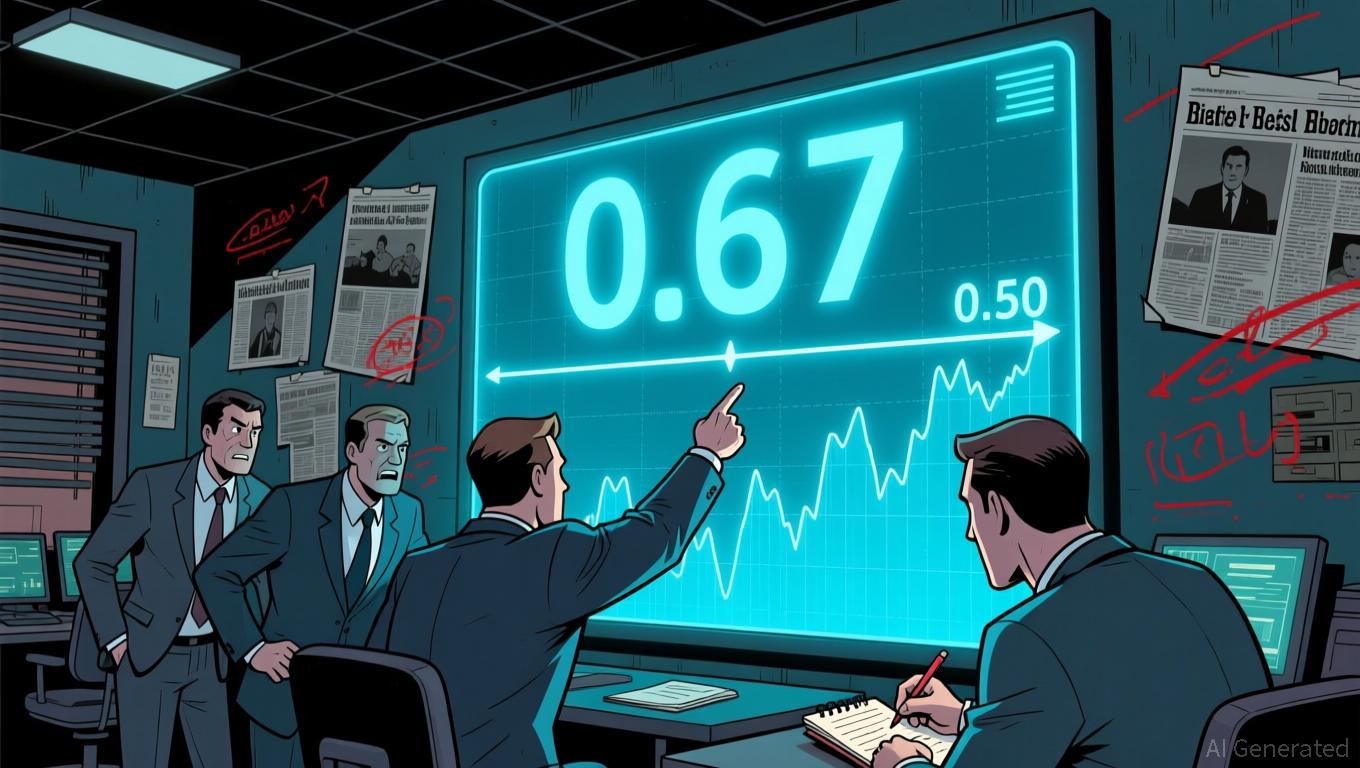Structural changes in the market and progress in regulations drive Bitcoin toward reaching $200,000
- Institutional and corporate Bitcoin accumulation creates a structural price floor as demand outpaces whale-driven sell-offs. - CFTC's tokenized collateral initiative lowers costs and boosts liquidity, attracting institutional capital to crypto markets. - Bitcoin trades near $113,000 with key resistance at $114,000–$116,000, while macro factors like U.S. policy will dictate near-term direction. - Growing DEX volumes and regulatory clarity could accelerate Bitcoin's ascent toward $200,000 amid mixed market

The possibility of Bitcoin reaching the $200,000 mark is drawing fresh attention as market fundamentals and regulatory shifts converge with optimistic technical signals. Recent figures indicate
Progress on the regulatory front is also supporting the case for upward movement. The U.S. Commodity Futures Trading Commission (CFTC) has launched an initiative to tokenize stablecoins and other assets for use as collateral in derivatives trading, which many see as a pivotal development for digital finance title2 [ 2 ]. Allowing tokenized assets to serve as collateral, the CFTC aims to lower transaction expenses and boost liquidity, potentially drawing more institutional investors into crypto markets. This regulatory move fits within the broader momentum toward tokenization, which
Sentiment in the market is cautious, as shown by the CMC Crypto Fear and Greed Index falling to 39 title1 [ 1 ]. Nevertheless, Bitcoin’s dominance at 62.1% of the $3.5 trillion total crypto market capitalization underscores its reputation as a safe haven while alternative coins lag behind title3 [ 3 ]. Large ETF outflows, such as the $258 million withdrawn from Bitcoin ETFs on September 26, briefly weighed on prices, but ongoing accumulation by long-term holders helped counteract this title4 [ 4 ]. Meanwhile,
Technical analysis identifies important resistance areas for Bitcoin. Traders are closely watching the $114,000–$116,000 band as a key level; breaking above it could open the way to $117,500 and possibly $120,000 title1 [ 1 ]. On the other hand, support is seen at $111,000 and $105,000. Ethereum faces similar hurdles, with resistance expected between $4,300 and $4,600 title1 [ 1 ]. These price ranges suggest ongoing consolidation rather than a decisive breakout, indicating that broader economic factors—such as U.S. monetary policy and inflation reports—will likely determine the short-term trend title4 [ 4 ].
Although speculative swings continue, the underlying factors driving adoption are becoming more prominent. The CFTC’s move toward tokenized collateral and the increase in corporate Bitcoin holdings point to a shift toward more institutional-grade infrastructure, which could spur wider adoption. The expanding influence of decentralized exchanges (DEXs), which experienced a record 25.3% increase in trading volume in Q2 2025 title3 [ 3 ], also signals a fundamental change in trading patterns. Should macroeconomic conditions stabilize and regulatory clarity improve, these elements could create a positive feedback loop, accelerating Bitcoin’s journey toward $200,000. Nonetheless, risks such as geopolitical instability and further ETF outflows could slow or disrupt this upward path title1 [ 1 ].
Disclaimer: The content of this article solely reflects the author's opinion and does not represent the platform in any capacity. This article is not intended to serve as a reference for making investment decisions.
You may also like
Ethereum Updates: Lazarus Group's Cross-Chain Theft Reveals Vulnerabilities in Crypto Exchanges
- South Korean authorities attribute Upbit's $30M hack to North Korea's Lazarus Group, using multi-chain laundering via Solana and Ethereum . - Attack mirrored 2019 incident, targeting admin accounts, intensifying scrutiny of Dunamu’s $35.2B fine and merger with Naver. - Hack occurred during Dunamu-Naver merger announcement, raising suspicions of disruption intent, aligning with Lazarus’s geopolitical tactics. - North Korea’s sanctions-driven cyberattacks highlight global risks as Lazarus evolves tactics,

Bitcoin News Update: Puell Multiple Drops—Sign of Recovery or Indication of Further Decline?
- Bitcoin's Puell Multiple drops to 0.67, nearing historical cycle bottoms but remaining above the 0.50 threshold linked to major price troughs. - Analysts cite undervaluation signals from MVRV Z-Score and NVT Golden Cross, suggesting potential rebounds after years-long lows. - Technical indicators point to $96,800-$118,000 targets, though experts caution against overreliance on single metrics amid mixed macroeconomic signals.

Hyperliquid News Today: "Paxos Introduces USDG0 to Connect Traditional Finance and DeFi Through Compliant Cross-Chain Liquidity"
- Paxos launches USDG0 on Plume, Hyperliquid, and Aptos, offering regulated cross-chain liquidity via LayerZero's OFT standard. - Plume positions USDG0 as a key RWA hub, aligning yields with U.S. Treasury benchmarks and institutional-grade infrastructure. - RWA tokenization exceeds $35B in on-chain value, driven by clearer regulations and expanding asset types, with USDG0 enhancing cross-chain utility. - USDG0's compliance contrasts with USDT0's growth, positioning it for institutional adoption as DeFi bri

Securitize Gains EU Approval for Tokenized Market System on Avalanche
